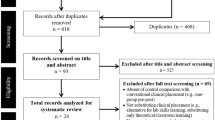Abstract
This chapter presents a business case for simulation-based mastery learning (SBML). SBML projects in medical education often yield downstream return on investment (ROI) which can be calculated using the Phillips ROI model. The Phillips ROI model first involves performing a business alignment needs assessment, determining the cost of an identified problem, and assessing how SBML can be a solution. Subsequently, the ROI model evaluates both inputs (cost) and outputs (outcomes) to ensure that institutions receive maximum effect from improvement initiatives. The chapter has four sections: (a) description of the Phillips ROI methodology, (b) an example of use of the ROI model with SBML, (c) additional examples of ROI, and (d) stakeholder engagement: convincing the C-suite. The chapter concludes with a brief coda.
Access this chapter
Tax calculation will be finalised at checkout
Purchases are for personal use only
Similar content being viewed by others
References
Kohn LT, Corrigan JM, Donaldson MS. To err is human: building a safer health system. Washington, DC: National Academy Press; 2000.
Brennan TA, Leape LL, Laird NM, Hebert L, Localio AR, Lawthers AG, et al. Incidence of adverse events and negligence in hospitalized patients. Results of the Harvard Medical Practice Study I. N Engl J Med. 1991;324(6):370–6.
Duffy FD, Holmboe ES. What procedures should internists do? Ann Intern Med. 2007;146(5):392–3.
Giraud T, Dhainaut JF, Vaxelaire JF, Joseph T, Journois D, Bleichner G, et al. Iatrogenic complications in adult intensive care units: a prospective two-center study. Crit Care Med. 1993;21(1):40–51.
Rubins HB, Moskowitz MA. Complications of care in a medical intensive care unit. J Gen Intern Med. 1990;5(2):104–9.
Rosenthal MB. Nonpayment for performance? Medicare’s new reimbursement rule. N Engl J Med. 2007;357(16):1573–5.
Leape LL, Brennan TA, Laird N, Lawthers AG, Localio AR, Barnes BA, et al. The nature of adverse events in hospitalized patients. Results of the Harvard Medical Practice Study II. N Engl J Med. 1991;324(6):377–84.
Joshi M, Ransom ER, Nash DB, Ransom SB. The healthcare quality book: vision, strategy, and tools. 3rd ed. Chicago: Health Administration Press; 2014.
Barsuk JH, Cohen ER, Feinglass J, McGaghie WC, Wayne DB. Use of simulation-based education to reduce catheter-related bloodstream infections. Arch Intern Med. 2009;169(15):1420–3.
Barsuk JH, Cohen ER, Potts S, Demo H, Gupta S, Feinglass J, et al. Dissemination of a simulation-based mastery learning intervention reduces central line-associated bloodstream infections. BMJ Qual Saf. 2014;23(9):749–56.
Barsuk JH, Cohen ER, Williams MV, Scher J, Jones SF, Feinglass J, et al. Simulation-based mastery learning for thoracentesis skills improves patient outcomes: a randomized trial. Acad Med. 2018;93(5):729–35.
Barsuk JH, McGaghie WC, Cohen ER, O’Leary KJ, Wayne DB. Simulation-based mastery learning reduces complications during central venous catheter insertion in a medical intensive care unit. Crit Care Med. 2009;37(10):2697–701.
Didwania A, McGaghie WC, Cohen ER, Butter J, Barsuk JH, Wade LD, et al. Progress toward improving the quality of cardiac arrest medical team responses at an academic teaching hospital. J Grad Med Educ. 2011;3(2):211–6.
Gossett DR, Gilchrist-Scott D, Wayne DB, Gerber SE. Simulation training for forceps-assisted vaginal delivery and rates of maternal perineal trauma. Obstet Gynecol. 2016;128(3):429–35.
Schwab B, Teitelbaum EN, Barsuk JH, Soper NJ, Hungness ES. Single-stage laparoscopic management of choledocholithiasis: an analysis after implementation of a mastery learning resident curriculum. Surgery. 2018;163(3):503–8.
Swensen SJ, Dilling JA, Mc Carty PM, Bolton JW, Harper CM Jr. The business case for health-care quality improvement. J Patient Saf. 2013;9(1):44–52.
Buzachero VV, Phillips J, Phillips PP, Phillips ZL. Measuring ROI in healthcare: tools and techniques to measure the impact and ROI in healthcare improvement projects and programs. New York: McGraw-Hill; 2013.
CMS’s Value Based Programs. Available from: https://www.cms.gov/Medicare/Quality-Initiatives-Patient-Assessment-Instruments/Value-Based-Programs/Value-Based-Programs.html.
Cohen ER, Feinglass J, Barsuk JH, Barnard C, O’Donnell A, McGaghie WC, et al. Cost savings from reduced catheter-related bloodstream infection after simulation-based education for residents in a medical intensive care unit. Simul Healthc. 2010;5(2):98–102.
Barsuk JH, Cohen ER, Feinglass J, Kozmic SE, McGaghie WC, Ganger D, et al. Cost savings of performing paracentesis procedures at the bedside after simulation-based education. Simul Healthc. 2014;9(5):312–8.
Barsuk JH, Cohen ER, Mikolajczak A, Seburn S, Slade M, Wayne DB. Simulation-based mastery learning improves central line maintenance skills of ICU nurses. J Nurs Adm. 2015;45(10):511–7.
AHRQ. Engaging stakeholders to improve the quality of children’s health care. Available from: https://www.ahrq.gov/policymakers/chipra/demoeval/what-we-learned/implementation-guides/implementation-guide1/index.html.
Jeffery N. Stakeholder engagement: a road map to meaningful engagement. Doughty Centre for Corporate Responsibility. Cranfield University School of Management. 2009. Available from: http://www.som.cranfield.ac.uk/som/dinamic-content/media/CR%20Stakeholder.pdf.
Preskill H, Jones N. A practical guide for engaging stakeholders in develo** evaluation questions. 2009. Available from: http://www.rwjf.org/content/dam/farm/toolkits/toolkits/2009/rwjf48595.
Author information
Authors and Affiliations
Corresponding author
Editor information
Editors and Affiliations
Rights and permissions
Copyright information
© 2020 Springer Nature Switzerland AG
About this chapter
Cite this chapter
Barsuk, J.H., Barsuk, S.A., Wayne, D.B. (2020). Return on Investment from Simulation-Based Mastery Learning. In: McGaghie, W., Barsuk, J., Wayne, D. (eds) Comprehensive Healthcare Simulation: Mastery Learning in Health Professions Education. Comprehensive Healthcare Simulation. Springer, Cham. https://doi.org/10.1007/978-3-030-34811-3_19
Download citation
DOI: https://doi.org/10.1007/978-3-030-34811-3_19
Published:
Publisher Name: Springer, Cham
Print ISBN: 978-3-030-34810-6
Online ISBN: 978-3-030-34811-3
eBook Packages: MedicineMedicine (R0)




